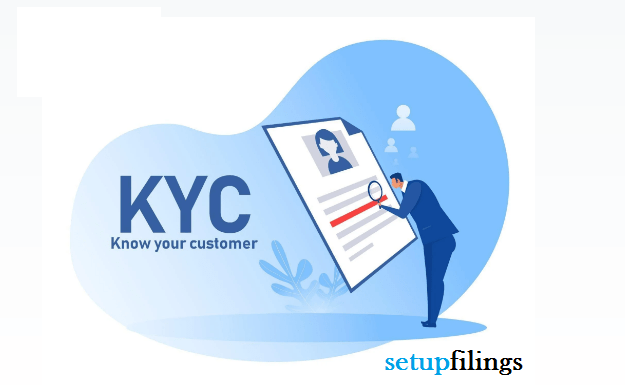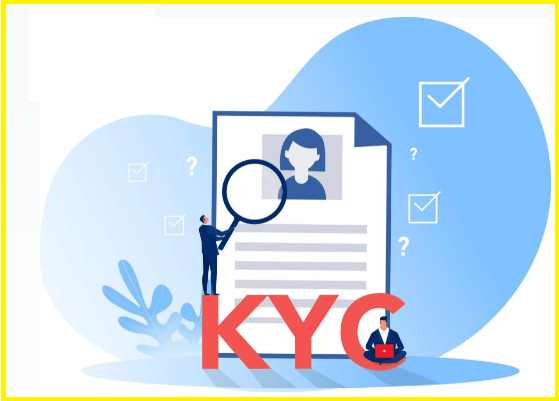
eKYC Online
KYC, which stands for ‘Know Your Customer’, must be a well-known term for any Indian who tried to urge any utility connections sort of a checking account, sim & LPG, etc.
KYC may be a regulatory policy that has been developed and applied worldwide to curb fraud, fraud, and concealment.
Through a KYC form, details of the customer alongside photocopies of valid government identity proofs are collected and stored during a database.
Aadhar Based eKYC
AadhaareKYC is that the electronic version of the KYC which is run by the Unique Identification Authority Of India (UIDAI).
Like the normal KYC, the thought of eKYC too is to verify the identity of a private except that it’s done online.
eKYC involves the digital KYC authentication of people via demographic & biometric information stored within the UIDAI database, which is retrieved after the customer verifies their identity.
This customer identification information is collected by UIDAI during the registration process for the Aadhaar initiative.
eKYC is straightforward to perform & completely digital. the various sorts of eKYC differ supported the methods employed by the customer to verify his or her identity before their KYC details are retrieved from the Aadhaar database.
Online eKYC is often conducted either via OTP or biometric identification. In these cases, an OTP is shipped to the customer’s Aadhaar-registered mobile number to authenticate Aadhaar, or a scanner is employed to read the customer’s fingerprints and retina & these readings are authenticated with the biometric information recorded for that individual within the UIDAI database. Online eKYC can only be employed by financial institutions (FIs) that are regulated. Private entities can only use eKYC after paying a licensing fee .they need to also pay the transaction fee for each eKYC verification performed.
Offline eKYC is performed either via XML or QR code. within the case of Aadhaar XML, the customer downloads an XML file together with his or her demographic information. This file is readable by KYC verification service providers. Offline eKYC also can be conducted by scanning the QR code on the customer’s Aadhaar card. These methods of eKYC are often employed by all businesses including private entities.
KYC, therefore, is fast & simple to perform. In most cases, eKYC is often completed just by entering an OTP, following which the customer’s KYC information is retrieved & verified.
How Does eKYC Work?
KYC aims to realize paperless biometric identification through the web. It makes use of the Aadhaar platform to determine the authenticity of a person’s identity.
As of now, only Aadhar card users can make use of this feature. So, if you don’t have one already, now would be the proper time to use for an Aadhar.
Typically, eKYC is employed by banks or agents providing utility connections or similar services to customers.
Any organization or agent who wishes to verify the identity of a possible customer can make use of the KYC.
The customer can simply use his/her Aadhar card and no other document. this protects the effort of getting to hold a bunch of docs and eliminates the necessity for in-person verification.
The working of the eKYC is fairly simple. Any authorized agent or institution can make use of the eKYC process.
When a customer approaches an agent/institution with a service request, biometric identification of the customer is that the initiative.
To make things much clear, let’s consider the instance of a person who wishes to open a replacement checking account with a nationalized bank.
Now, the traditional procedure would require him to hold necessary documents to prove his identity and address, and also a minimum amount of money required to open an account.
Step-by-step process to try to toAadhareKYC online:
- The customer produces his Aadhar card before the bank official. The official takes note of the Aadhaar number.
- A biometric scanner captures the potential customer’s fingerprint or retinal image, though fingerprint is that the popular choice. Mobile OTP-based authentication methods also are made available now.
- Once the device reads the biometric, the worth is communicated to UIDAI via secure servers.
- The input biometric value is matched with the worth stored within the database for that specific Aadhaar number.
- If the values match, it might be safe to assume that the potential customer’s identity isn’t spurious.
- Following successful verification of the customer’s identity, the UIDAI will release all his credentials like photographs, addresses, date of birth, etc to the bank or agent, thus eliminating the necessity to hold around multiple documents. The UIDAI lets the agent/organization store a soft copy of all the small print in their remote server lending the agent/organization the liberty to access it as and when the necessity arises.
The Advantages of eKYC
Aside from the apparent benefits like convenience and paperless biometric identification, there are other benefits that are hard to ignore. they’re as follows
- Not everyone can use eKYC verification services. Only agents and institutions that are verified by UIDAI can make use of the Aadhaar-based eKYC method. this suggests that your credentials will never enter the hands of individuals with malicious intent as long as eKYC is employed. Currently, even roadside stalls sell mobile sims after collecting copies of your identity and address proof. this is often not a security arrangement. KYC eliminates the likelihood of fraud and identity thefts.
- The biometric scanners employed by agents/institutions too would need to be verified by UIDAI, which adds another layer of security.
- KYC often allows instant verification and thereby insthttps://uidai.gov.in/ant opening of bank accounts or mobile sim activation. this is often expected to save lots of much time.
- The eKYC process is completely freed from cost.
Visited 180 Times, 1 Visit today


